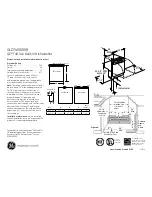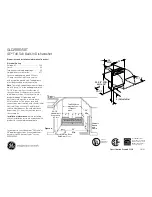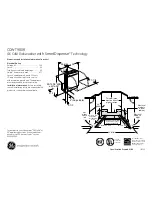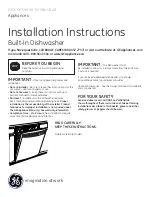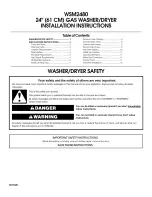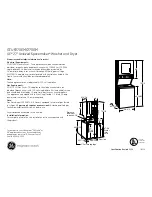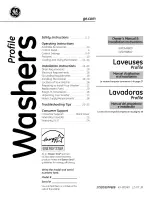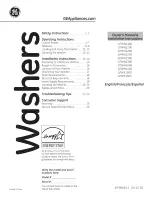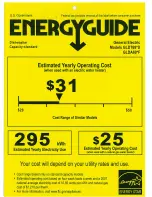
5
Place the template of the inner side of the panel and match the
height of the baseboard with the lower edge of the panel (
fig. 4
)
using the graduated scale. Make sure the template is horizon-
tally centred with reference to the vertical lines marked at the
ends.
After placing the template in the correct position, trace the posi-
tions of the following holes, pushing in with the tip of your pen-
cil:
•
holes for the hinges and hinge screws (
fig. 4
)
•
holes for fixing the metal plate (if the magnetic lock is
used), or the hook for the push-pull lock (
fig. 4, A - B
)
Applying the
panel elements
and fixing the
panel
1) Drill the holes for the hinges (
fig. 5
), the hook for the push-
pull lock (
fig. 5
), or the metal plate if you decide to use the
magnetic lock (
fig. 6
), and the holes for fixing the hinges
(
fig. 6
).
2) The 13 mm depth of the 2 mm holes, for fixing the hinges
and a metal plate for the magnet lock, only applies to the
solid wood
panel. For the
chipboard panel
,
simply drill the
upper coating –
fig. 6.
3) Screw the two hinges to the panel (
fig. 7
)
4) Mount the hook for the push-pull lock or the metal plate for
the magnet lock on the side opposite the hinges (
fig. 7
).
5) Fix the panel to the washing machine following the instruc-
tions shown in
fig. 8
.
Adjusting the
hinges
If, after applying the panel to the washing machine, it is slightly
inclined or off-centre with respect to the front of the machine,
correct its position by adjusting the mobile part of the hinges
(fig. 9
).
Positioning the
washing ma-
chine in the
cabinet
Position the washing machine in the cabinet and, if necessary,
adjust the feet to level it and lock them with the relative locknut.
On appliances with adjustable rear feet, refer to the operator’s
manual.
To prevent the vibrations generated by the washing machine
from being transmitted to the cabinet, make sure the sides and
top do not touch the cabinet.
There must be a gap of at least
2 mm.
The back of the machine must also remain detached
from the rear panel.
If the cabinet is 870 mm high, the washing machine height-
ening kit on sale from the Spare Parts Service, must be
used.
To comply with safety legislation, any gaps between the floor
and the bottom of the baseplate and between the floor and the
sides of the machine when it is positioned at the end of a line of
furniture must be completely closed.
The cover must be installed in such a way as to make it











